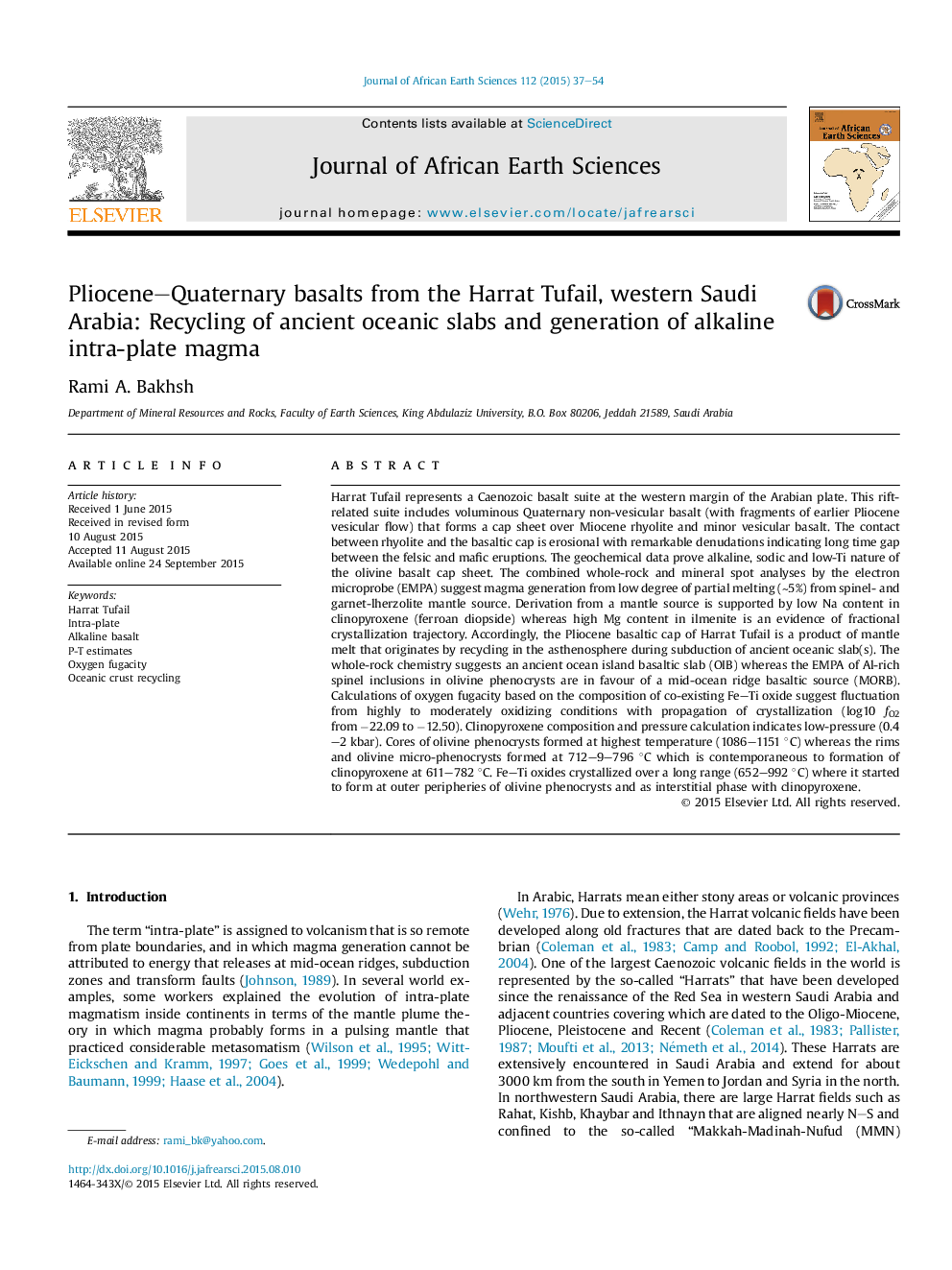| کد مقاله | کد نشریه | سال انتشار | مقاله انگلیسی | نسخه تمام متن |
|---|---|---|---|---|
| 4728369 | 1356450 | 2015 | 18 صفحه PDF | دانلود رایگان |
• The Pliocene–Quaternary at Harrat Tufail is dominated by alkali olivine basalt.
• Intra-plate magmatism resulted from recycling of ancient oceanic slabs.
• The ancient oceanic source material is OIB and/or MORB.
• Partial melting in the upper mantle never exceeds ∼10% at shallow level.
• The source material is spinel lherzolite rather than garnet lherzolite.
Harrat Tufail represents a Caenozoic basalt suite at the western margin of the Arabian plate. This rift-related suite includes voluminous Quaternary non-vesicular basalt (with fragments of earlier Pliocene vesicular flow) that forms a cap sheet over Miocene rhyolite and minor vesicular basalt. The contact between rhyolite and the basaltic cap is erosional with remarkable denudations indicating long time gap between the felsic and mafic eruptions. The geochemical data prove alkaline, sodic and low-Ti nature of the olivine basalt cap sheet. The combined whole-rock and mineral spot analyses by the electron microprobe (EMPA) suggest magma generation from low degree of partial melting (∼5%) from spinel- and garnet-lherzolite mantle source. Derivation from a mantle source is supported by low Na content in clinopyroxene (ferroan diopside) whereas high Mg content in ilmenite is an evidence of fractional crystallization trajectory. Accordingly, the Pliocene basaltic cap of Harrat Tufail is a product of mantle melt that originates by recycling in the asthenosphere during subduction of ancient oceanic slab(s). The whole-rock chemistry suggests an ancient ocean island basaltic slab (OIB) whereas the EMPA of Al-rich spinel inclusions in olivine phenocrysts are in favour of a mid-ocean ridge basaltic source (MORB). Calculations of oxygen fugacity based on the composition of co-existing Fe–Ti oxide suggest fluctuation from highly to moderately oxidizing conditions with propagation of crystallization (log10 fO2 from −22.09 to −12.50). Clinopyroxene composition and pressure calculation indicates low-pressure (0.4–2 kbar). Cores of olivine phenocrysts formed at highest temperature (1086–1151 °C) whereas the rims and olivine micro-phenocrysts formed at 712–9–796 °C which is contemporaneous to formation of clinopyroxene at 611–782 °C. Fe–Ti oxides crystallized over a long range (652–992 °C) where it started to form at outer peripheries of olivine phenocrysts and as interstitial phase with clinopyroxene.
Journal: Journal of African Earth Sciences - Volume 112, Part A, December 2015, Pages 37–54
